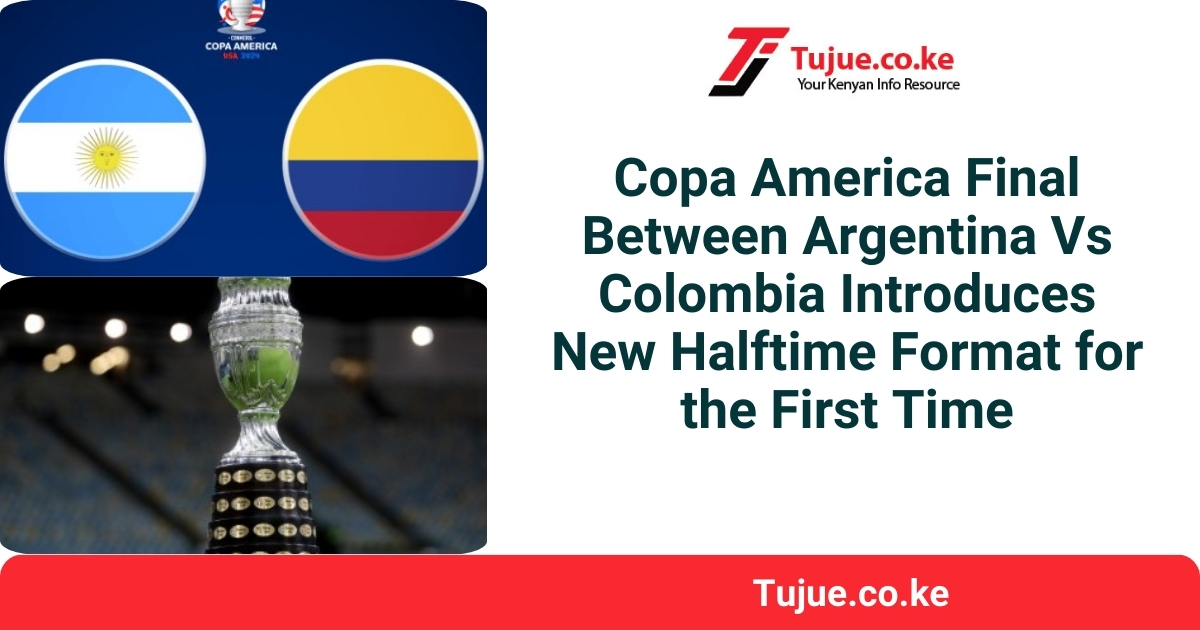Copa America Halftime Show History and Evolution

The Copa America halftime show has evolved significantly since its inception in the 1990s. Initially, the show featured local performers and traditional music. However, over the years, it has become a global stage for some of the world’s biggest music stars.
Copa America’s halftime shows are renowned for their vibrant performances, and one that stands out is Shakira’s electrifying set. Shakira’s halftime show at Copa America was a spectacle, captivating the audience with her energetic dance moves and powerful vocals. The show’s success further cemented Copa America’s reputation for delivering unforgettable halftime entertainment.
One of the key milestones in the show’s evolution came in 2007, when Shakira performed her hit song “Hips Don’t Lie” at the halftime of the Copa America final. This performance helped to raise the profile of the show and attract a wider audience.
In recent years, the Copa America halftime show has continued to grow in popularity. In 2019, the show featured performances by Jennifer Lopez and Pitbull. This performance was a huge success and helped to further solidify the show’s status as one of the most watched events in Latin America.
Notable Performers
Over the years, the Copa America halftime show has featured performances by some of the world’s biggest music stars. These include:
- Shakira
- Jennifer Lopez
- Pitbull
- Ricky Martin
- Marc Anthony
Themes and Controversies, Copa america halftime show
The Copa America halftime show has also been a platform for social and political messages. In 2015, the show featured a performance by Colombian singer Juanes, who sang a song about peace in the wake of the country’s civil war.
Amidst the grandeur of the Copa America halftime show, a whisper drifted through the air, weaving an enigmatic tapestry of extraterrestrial intrigue. Like the elusive alien Romulus, whose existence captivated the minds of stargazers ( alien romulus ), the spectacle on the field tantalized with its tantalizing display of skill and artistry.
As the final whistle blew, the stadium reverberated with the echo of a cosmic connection, leaving spectators suspended between the realm of sport and the boundless mysteries of the unknown.
The show has also been the subject of some controversy. In 2011, the show featured a performance by Brazilian singer Claudia Leitte, who was criticized for her revealing outfit.
Artistic and Cultural Impact of the Copa America Halftime Show
The Copa America halftime show has become a significant cultural event in Latin America, showcasing the region’s rich musical, dance, and artistic heritage. It provides a platform for renowned artists and emerging talents to connect with a global audience, celebrating Latin American culture and its global influence.
Impact on Music and Dance
The halftime show has had a profound impact on the music industry. It has introduced new musical genres, such as salsa, samba, and reggaeton, to a wider audience. Artists who have performed at the show have gained international recognition, boosting their careers and inspiring aspiring musicians. The show has also showcased traditional Latin American dance forms, such as tango and cumbia, exposing them to a global stage.
Influence on Popular Culture
The Copa America halftime show has become a source of inspiration for artists and creators across the globe. Its vibrant colors, energetic performances, and cultural diversity have influenced fashion, art, and even film. Designers have incorporated Latin American motifs into their collections, while artists have drawn inspiration from the show’s visuals and performances for their own work. The halftime show has also featured collaborations between Latin American artists and international stars, fostering cultural exchange and promoting understanding.
Production and Logistics of the Copa America Halftime Show

The Copa America halftime show is a highly complex and demanding production, requiring meticulous planning and coordination. The process begins months in advance, with the formation of a creative team that includes producers, directors, choreographers, musicians, and technical experts. This team works together to develop a concept for the show, which must be both visually stunning and thematically relevant to the tournament and its host country.
Once the concept is finalized, the production team begins to assemble the necessary resources. This includes booking performers, securing venues, and acquiring equipment. The technical team must also develop a detailed plan for the show’s execution, which includes everything from lighting and sound to stage design and crowd management.
Technical Challenges
The Copa America halftime show presents a number of technical challenges. One of the biggest challenges is the short amount of time available to set up and execute the show. The halftime break typically lasts only 15 minutes, so the production team must be able to quickly and efficiently transform the stadium into a performance space. Another challenge is the need to accommodate a large number of performers. The halftime show often features dozens of dancers, musicians, and other performers, so the production team must ensure that everyone has enough space to perform safely and effectively.
Logistical Issues
In addition to the technical challenges, the Copa America halftime show also presents a number of logistical issues. One of the biggest challenges is transportation. The show often takes place in cities that are far from the performers’ home bases, so the production team must arrange for transportation for everyone involved. Another challenge is security. The halftime show is a major public event, so the production team must work closely with law enforcement to ensure the safety of the performers and the audience.
Safety Precautions
The safety of the performers and the audience is the top priority for the Copa America halftime show production team. The team takes a number of precautions to ensure that everyone involved is safe, including:
- Conducting thorough safety inspections of the venue and equipment.
- Providing performers with safety briefings and training.
- Having medical personnel on standby in case of emergencies.